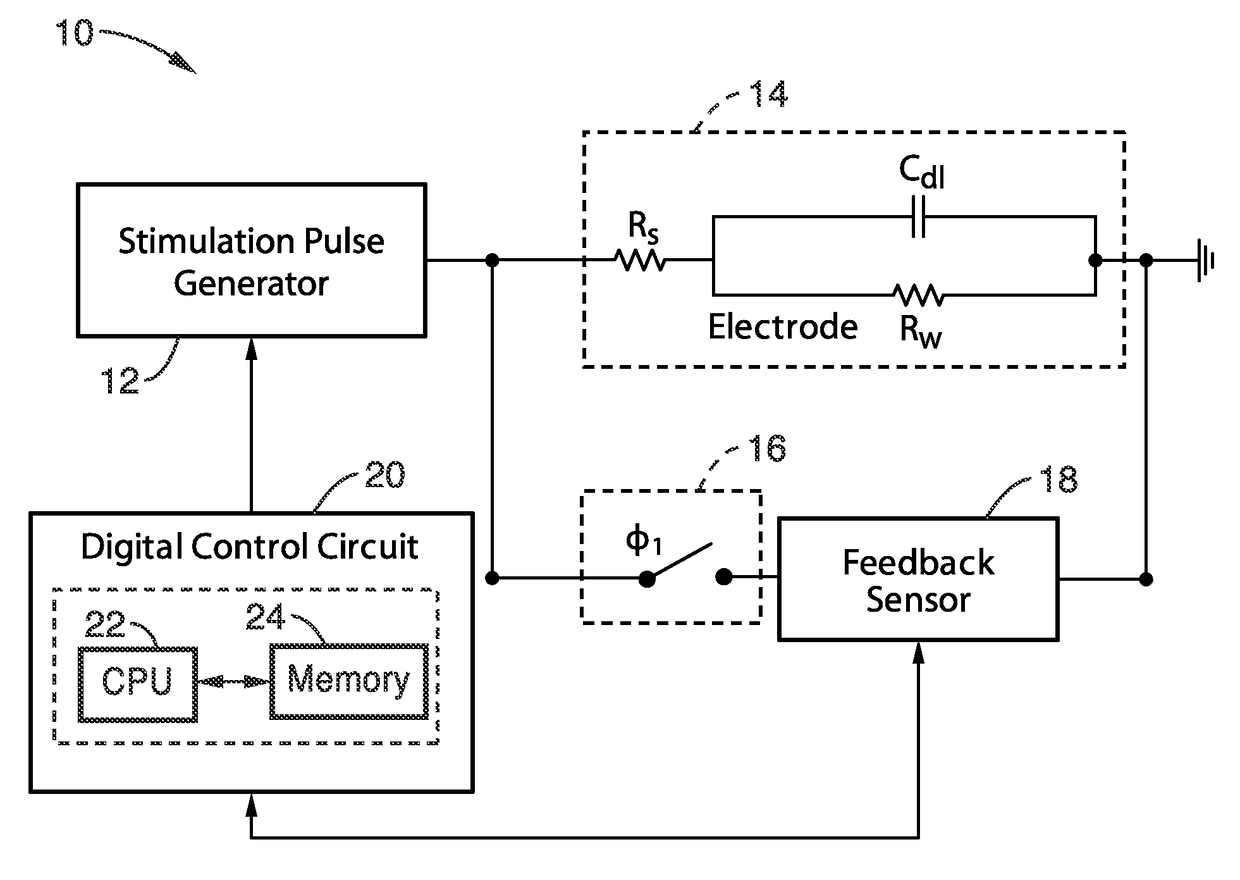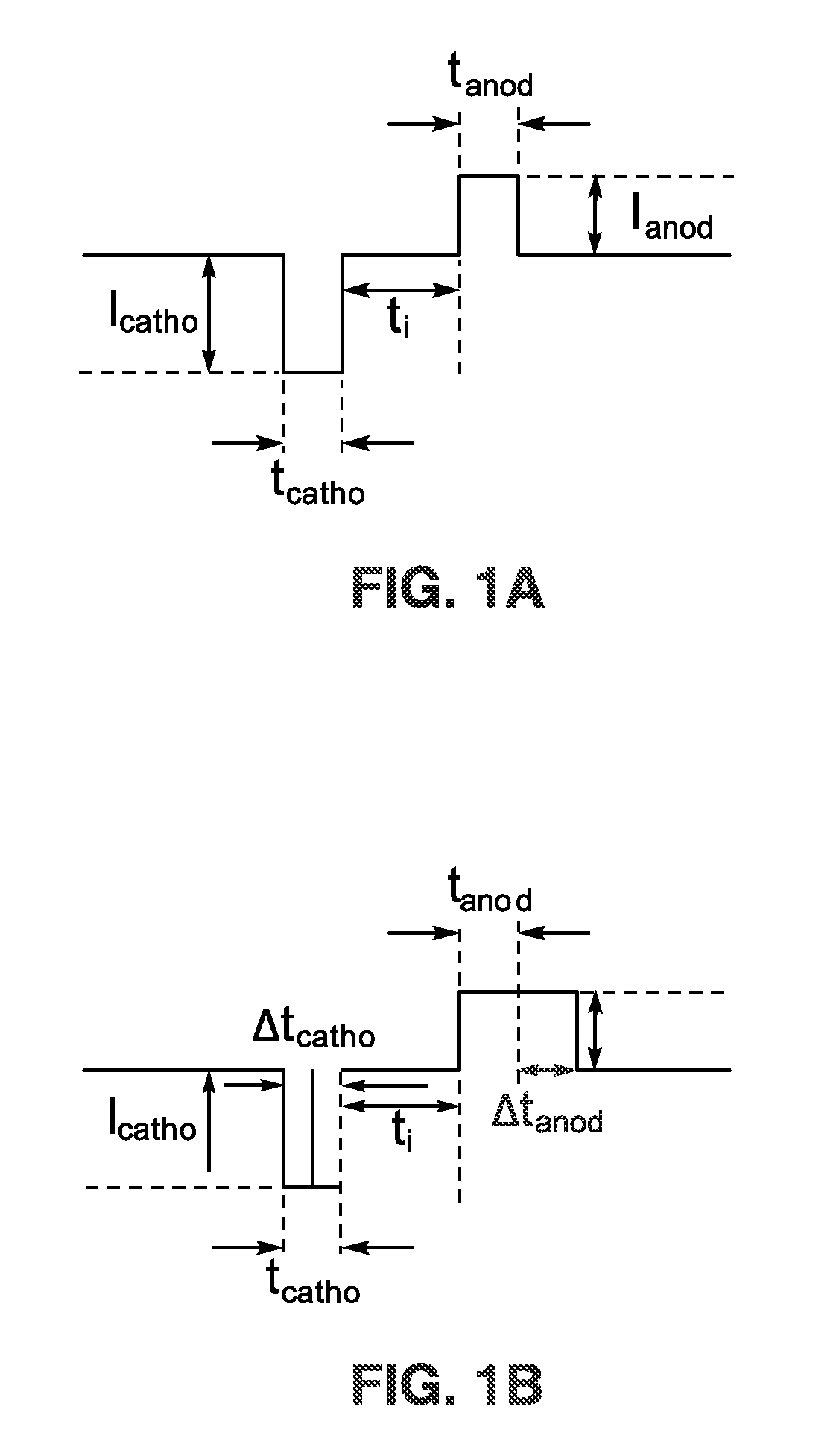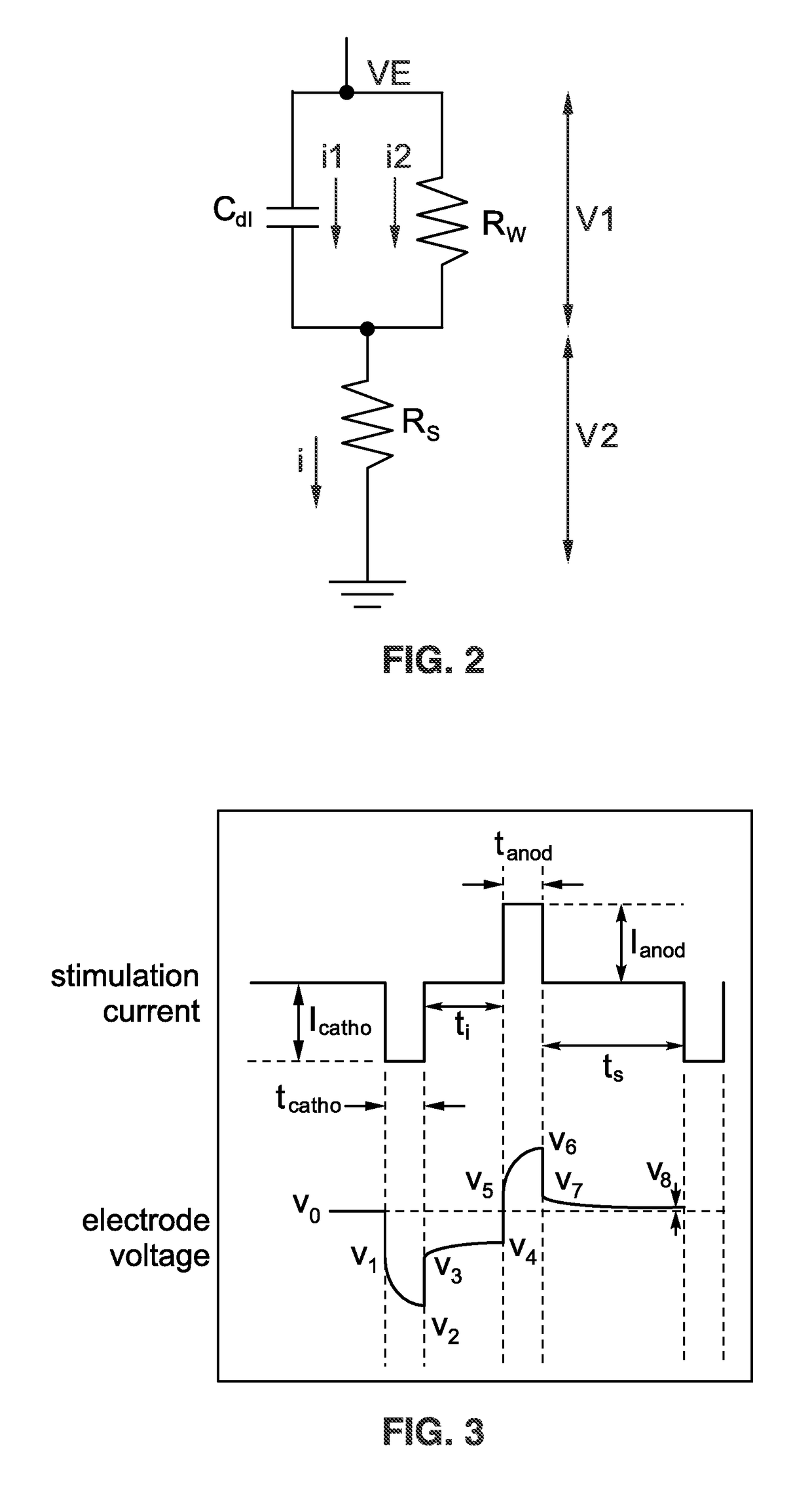Electrical charge balancing method and apparatus for functional stimulation using precision pulse width compensation
a functional stimulation and pulse width compensation technology, applied in the field of active charge balancing circuits of stimulator circuits, can solve the problems of residual charge damage to surrounding tissue and electrodes, and might not be effective ways to ensure a safe neural stimulation, so as to reduce hardware costs, eliminate residual charges, and improve precision
- Summary
- Abstract
- Description
- Claims
- Application Information
AI Technical Summary
Benefits of technology
Problems solved by technology
Method used
Image
Examples
Embodiment Construction
[0035]FIG. 1A and FIG. 1 B illustrate different unbalanced stimulation current waveforms. In FIG. 1A is seen an unbalanced stimulation current waveform, where Icatho and Ianod are the amplitude of cathodic and anodic current stimulus, ti is the inter-phase delay, tcatho and tanod are the stimulation pulse widths. It can be seen in FIG. 1A, that the pulse widths of the cathodic and anodic stimulus are the same, while the current levels Icatho and Ianod are different.
[0036]In FIG. 1B, toward achieving a zero net charge residual, the width of anodic / cathodic current stimulus is automatically adapted according to the present invention based on discontinuously sampling stimulus pulse voltage. In one embodiment, a sampling switch, feedback circuit, and digital control circuit are utilized for controlling the width of the compensating pulse generated by a stimulation pulse generator. The present invention allows precise control of these pulse widths and thus accurate charge balancing.
[0037...
PUM
 Login to View More
Login to View More Abstract
Description
Claims
Application Information
 Login to View More
Login to View More - R&D
- Intellectual Property
- Life Sciences
- Materials
- Tech Scout
- Unparalleled Data Quality
- Higher Quality Content
- 60% Fewer Hallucinations
Browse by: Latest US Patents, China's latest patents, Technical Efficacy Thesaurus, Application Domain, Technology Topic, Popular Technical Reports.
© 2025 PatSnap. All rights reserved.Legal|Privacy policy|Modern Slavery Act Transparency Statement|Sitemap|About US| Contact US: help@patsnap.com



